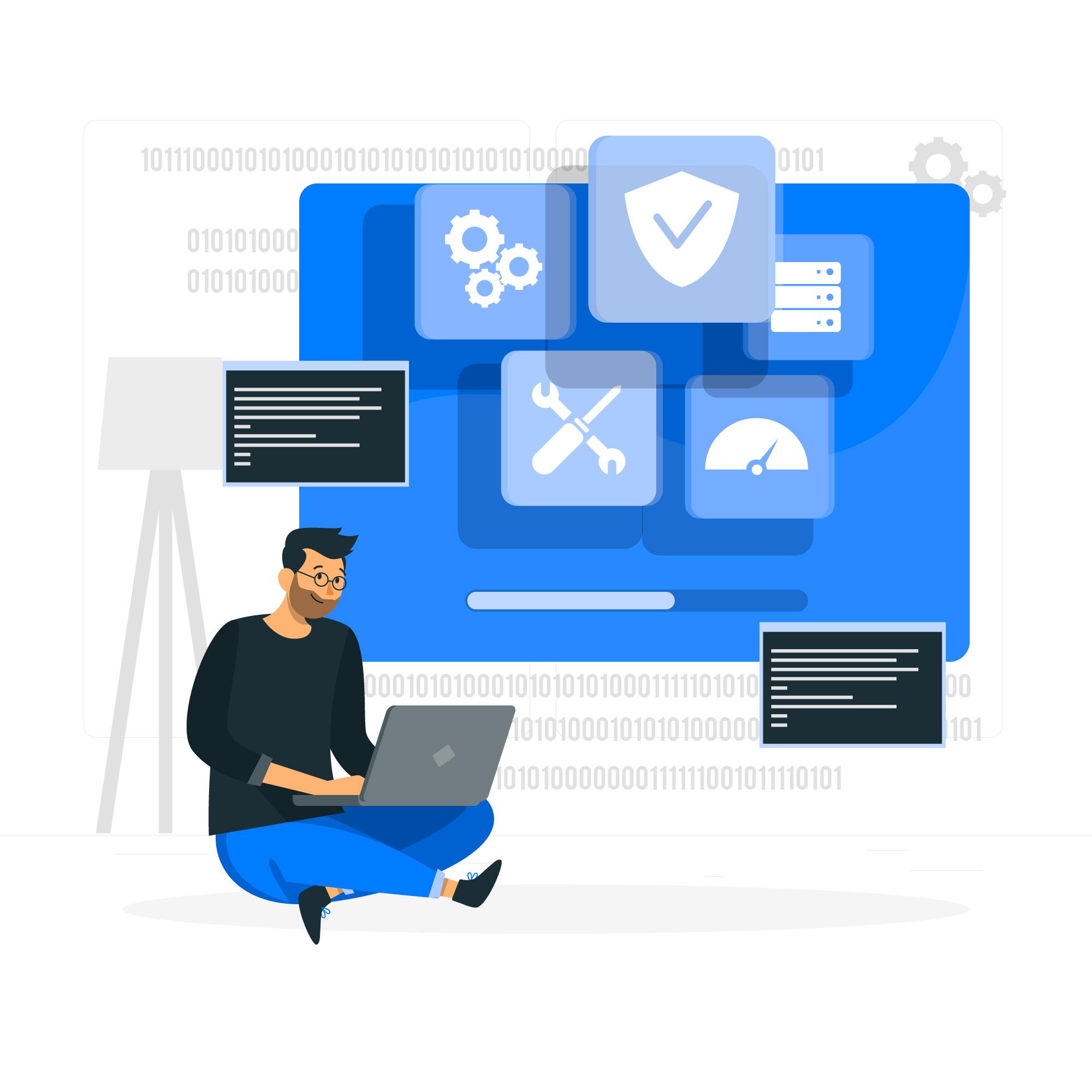As technology continues to advance, the demand for versatile software developers who can handle both front-end and back-end tasks—known as full stack developers—continues to rise. A full stack development company relies on these skilled professionals to drive innovation and streamline development processes. In 2024, becoming a full stack developer means mastering a diverse set of skills that are crucial for tackling the complexities of modern web and software development.
Understanding Full Stack Development
Full stack development encompasses both front-end and back-end aspects of software development. Front-end development involves creating the user interface and ensuring the user experience is visually appealing and functional across various devices. Back-end development focuses on server-side logic, database management, and application integration.
Full stack developers are proficient in multiple programming languages and frameworks, enabling them to build complete and efficient software applications. This integrated approach allows for greater control over projects from start to finish, making the development process more streamlined and cohesive.
Relevance of Full Stack Development
There are a number of reasons why full stack development is so integral to the technological ecosystem of today and why any full stack development company is certain to thrive:
-
Versatility: Full stack developers are versatile as they are skilled in both front-end and back-end languages and frameworks, making them highly valuable in small to medium-sized tech teams.
-
Cost-Effective: Employing full stack developers can be more cost-effective for companies since they can handle multiple aspects of development, reducing the need for specialized personnel.
-
Faster Development: Full stack development can lead to faster project turnaround because it eliminates dependencies between teams working on different layers of development.
-
Simplified Prototyping: Full stack developers can quickly create complete prototypes for products, facilitating more dynamic and iterative development.
-
Innovation and Adaptability: These developers can oversee and implement end-to-end solutions, which is crucial for startups and companies looking to innovate quickly and adapt to market changes.
Who is a Full Stack Developer?
A full stack developer is a software engineer who can handle all the work of databases, servers, systems engineering, and clients. They are proficient in both front-end and back-end languages and frameworks, as well as server, network, and hosting environments. This role requires understanding business logic and user experiences, managing project needs that span the entire spectrum of the application. Essentially, they are capable of creating and managing a complete application independently.
How to be a Full Stack Developer
Embarking on a career as a full stack developer involves mastering a diverse set of skills in both front-end and back-end technologies. This comprehensive guide outlines the step-by-step process to becoming a proficient full stack developer.
Skills and Education
Full stack development is a tech-heavy skill set that requires exposure and practice in a variety of technical aspects beginning with coding. Here are the aspects to cover when becoming a full stack developer:
Education
-
Formal Education: Start with a degree in computer science or a related field that provides a strong foundation in programming fundamentals.
-
Coding Bootcamps: Enroll in specialized full stack development bootcamps which offer practical, hands-on training in specific programming languages and tools.
Core Skills Required
-
Front-End Technologies: Learn HTML, CSS, and JavaScript to build interactive and visually appealing user interfaces.
-
Back-End Technologies: Gain proficiency in server-side languages such as Python, Ruby, Node.js, and frameworks like Express.js.
-
Database Management: Understand how to manage databases using SQL or NoSQL solutions, essential for data-driven applications.
Advanced Technologies to Master
-
DevOps Practices: Familiarize yourself with DevOps tools and methodologies to streamline and automate processes.
-
Cloud Services: Learn to integrate and manage cloud services like AWS, Azure, or Google Cloud, which are pivotal in today’s scalable applications.
Step-by-Step Guide to be Full Stack Developers
-
Learn the Basics: Start with HTML, CSS, and JavaScript to get a solid grounding in front-end web development.
-
Expand to Back-End Languages: Learn back-end languages such as Python, Ruby, Java, or Node.js. Choose one to begin with, based on your interests or market demand.
-
Understand Database Management: Gain proficiency in database technologies like MySQL, MongoDB, or PostgreSQL to manage data storage and retrieval effectively.
-
Explore Frameworks: Delve into frameworks that speed up development. For front-end, consider React, Angular, or Vue.js. For back-end, frameworks like Django (Python), Rails (Ruby), or Express (Node.js) are popular.
-
Learn Version Control: Master Git and version control systems as they are essential for managing changes in development projects.
-
Practice with Projects: Apply your skills to real-world projects. Start with small projects and gradually take on bigger challenges to consolidate your learning.
-
Study DevOps: Learn about DevOps practices which include software development and IT operations to increase an organization’s ability to deliver applications and services at high velocity.
-
Continuous Learning: Technology evolves rapidly, and staying updated with the latest advancements is crucial.
-
Networking: Engage with other developers through forums, social media, and meetups. Collaboration and networking are invaluable for learning and career advancement.
-
Build a Portfolio: Assemble a portfolio of your work to showcase your skills to potential employers or clients.
Building a Portfolio
Building a portfolio for full stack development is essential. It serves as a tangible showcase of your skills across both front-end and back-end development, illustrating your ability to handle comprehensive project aspects from server management to user interface creation. A robust portfolio enhances your visibility and employability by demonstrating your practical experience and problem-solving capabilities in real-world scenarios. Moreover, it provides potential employers or clients with a direct insight into your technical proficiency and project management skills, thereby increasing your credibility in the competitive tech industry.
How to Build a Portfolio for Full Stack Development
-
Start with Personal Projects: Develop projects that showcase your skills in both front-end and back-end development. Ensure these projects solve real problems or showcase innovative solutions.
-
Include a Variety of Technologies: Display your versatility by including projects that use different languages, frameworks, and databases.
-
Detail Your Contributions: For each project, clearly articulate what your contributions were, the technologies used, and the challenges faced.
-
Ensure Accessibility: Host your portfolio online where it is easily accessible to potential employers and clients. Use platforms like GitHub or create a personal website.
-
Keep Updating: Regularly update your portfolio with new projects and technologies to keep it current and relevant.
By following these steps, you can build a compelling portfolio that effectively demonstrates your full stack development skills and enhances your professional appeal.
Networking and Professional Growth
Networking is vital in full stack development as it provides a platform for knowledge exchange, staying updated with industry trends, and accessing new career opportunities. Engaging with a community of peers allows developers to share solutions and learn from others’ experiences, which is invaluable in navigating the complexities of software development. It can also lead to mentorship opportunities and inspire innovation, significantly contributing to professional growth and success in the rapidly evolving tech landscape.
How to Effectively Network for Full Stack Developers
-
Attending Industry Conferences and Meetups: These events are excellent for meeting peers, exchanging ideas, and learning from experienced professionals in the field.
-
Participating in Online Forums and Communities: Websites like Stack Overflow, GitHub, and Reddit have vibrant communities where developers share knowledge and collaborate on projects.
-
Contributing to Open Source Projects: This not only helps in building your public portfolio but also connects you with other developers who are working on similar technologies.
-
Using Social Media Platforms: Platforms like LinkedIn and Twitter are powerful for connecting with industry leaders and staying updated with the latest trends and job opportunities.
-
Joining Local Developer Groups: Engaging with local developer groups can provide support and foster professional relationships in your immediate area.
By actively participating in these networking avenues, full stack developers can build a robust professional network that supports career growth and learning.
Finding the Right Full Stack Development Company
For a potential employee looking to choose the right full stack development company to work for, consider these key factors:
-
Company Culture: Assess if the company’s values align with your personal values and work style. A good cultural fit can enhance job satisfaction and productivity.
-
Career Development Opportunities: Look for companies that offer growth opportunities such as training programs, mentorship, and projects that challenge your skills.
-
Project Variety: Evaluate if the company works on projects that interest you and will help you broaden your skills across different technologies and industries.
-
Work-Life Balance: Consider the company’s stance on work-life balance, which can greatly affect your overall well-being and job satisfaction.
-
Compensation and Benefits: Ensure the compensation aligns with industry standards and that benefits meet your needs.
Researching these aspects, asking questions during interviews, and possibly reaching out to current or past employees can provide valuable insights to help you make an informed decision.
Conclusion
In 2024, becoming a full stack developer offers a promising career path filled with opportunities for innovation and problem-solving. By acquiring a broad range of technical skills and staying abreast of industry advancements, aspiring developers can find rewarding roles in leading full stack development companies. Whether through formal education, self-study, or practical experience, the journey to becoming a full stack developer is one of continuous learning and adaptation.
This comprehensive approach not only ensures readiness for current technological challenges but also prepares for future advancements, making a career in full stack development both dynamic and fulfilling.





